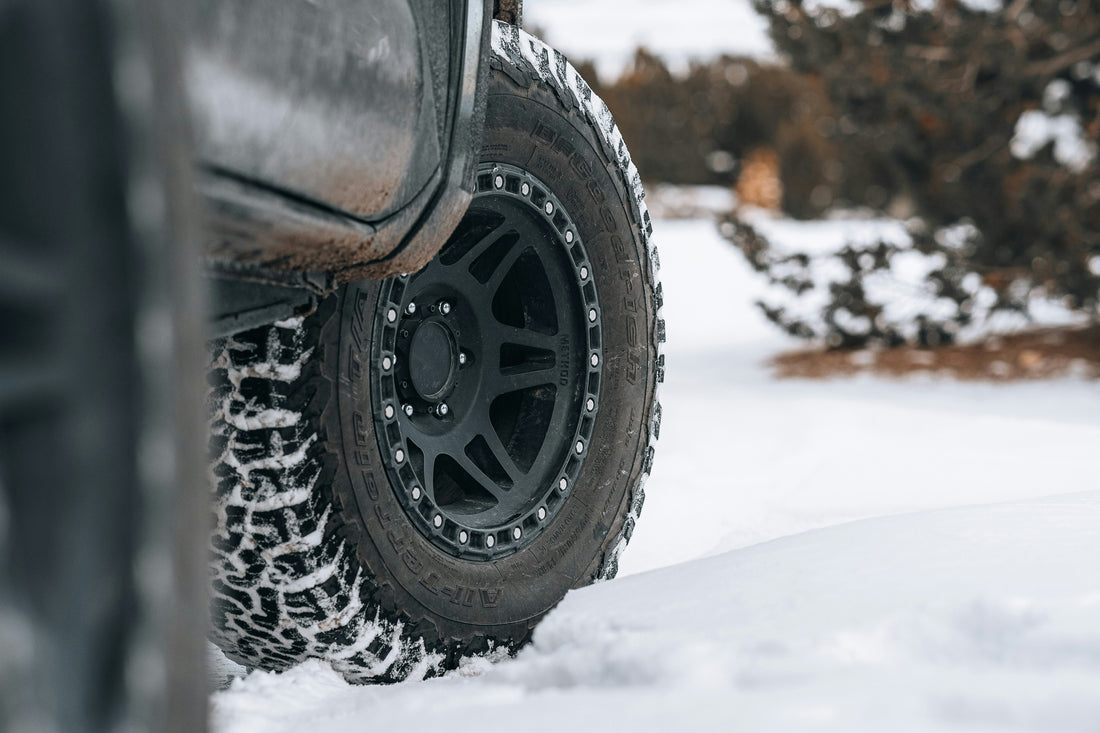HOW TO READ TIRE SIZES FOR YOUR VEHICULE
Knowing how to read tire sizes is essential for ensuring that your vehicle is equipped with the correct tires, whether you're replacing them or upgrading for performance. At Mchip Performance, we’re here to help you understand what those numbers and letters mean so you can make the best choice for your car, truck, or SUV.

Understanding tire size codes
Tire size is typically printed on the sidewall of every tire. It appears as a combination of letters and numbers, like P255/70R16 91S. This code provides key details about the tire’s specifications and fitment. Let’s break down what each part of this code represents:
1. Tire type
The first letter in the tire size code indicates the type of tire:
- P: Stands for “Passenger vehicle tire.” These tires are designed for regular cars, SUVs, and light trucks.
- LT: Refers to “Light Truck” tires, which are used for heavier vehicles, such as trucks that carry heavier loads.
If no letter appears, the tire is likely a European metric tire, designed similarly to P tires but with slight differences in load capacity.
2. Tire width (255)
The next three digits refer to the tire’s width in millimeters. This is the distance from one side of the tire to the other, measured across the tread. For instance, 255 means the tire is 255 millimeters wide.
3. Aspect ratio (70)
The aspect ratio is the height of the tire's sidewall, shown as a percentage of the tire's width. In this case, 70 means the tire’s height is 70% of its width. A higher aspect ratio typically indicates a tire built for a smoother, more comfortable ride, especially on uneven or off-road surfaces.
4. Construction type (R)
The letter R stands for radial construction, the most common type of tire design. Radial tires have layers of fabric that run radially across the tire, enhancing flexibility and providing a smoother ride. Most modern vehicles use radial tires.
There are two types of construction that you may see on the sidewall of a tire:
- R - Radial: This construction means the tire's internal ply cords are oriented in a radial direction (at 90 degrees to the centerline of the tread). Radial tires have been the industry standard for over 40 years and represent the vast majority of tires on the road today.
- D - Diagonal or Bias Ply: "Bias-ply" tires were used on automobiles and light trucks until the '70s. Although they are less common now, they have a different internal structure where the ply cords are angled at 30 to 45 degrees to the centerline of the tread.
5. Wheel diameter (16)
The last two digits indicate the wheel’s diameter in inches. This is the size of the wheel that the tire is designed to fit. For example, 16 means the tire fits a 16-inch wheel.
Load index and speed rating
In addition to the primary tire size code, you’ll often see two more numbers at the end of the sequence: the load index and the speed rating.
1. Load index (91)
The load index indicates the maximum weight a tire can support. For example, a load index of 91 can carry up to 1,356 lbs per tire. The higher the number, the greater the load the tire can handle.
2. Speed rating (S)
The speed rating is represented by a letter, such as S, indicating the maximum speed the tire can safely sustain. In this case, S is rated for up to 112 mph (180 km/h).
Here are the most common letters for speed ratings and their corresponding maximum speeds:
- Q: 99 mph
- R: 106 mph
- S: 112 mph
- T: 118 mph
- U: 124 mph
- H: 130 mph
- V: 149 mph
- W: 168 mph
- Y: 186 mph
- ZR: 186+ mph
Why it’s important to choose the right tire size
Choosing the correct tire size for your vehicle is critical for several reasons:
- Safety: Properly sized tires ensure your car handles as it should, especially during emergency maneuvers.
- Performance: The right tire size improves handling, acceleration, and braking.
- Fuel Efficiency: Incorrect tire size can increase fuel consumption.
- Comfort: Mismatched tires can make your ride bumpier and less smooth.
Where to find your tire size
Your tire size can be found in several places:
- On the tire’s sidewall: Look for the series of numbers and letters printed on your existing tires.
- Driver's side door: Check the sticker inside the door jamb for the manufacturer’s recommended tire size.
- Owner's manual: Your vehicle’s manual will also list the recommended tire specifications.
Need help reading tire sizes? Ask the experts at Mchip Performance
At Mchip Performance, we’re committed to helping you find the right tires for your vehicle. If you’re unsure about your tire size or want advice on upgrading for performance, our team of experts is here to assist. Stop by our shop or contact us online for personalized tire recommendations!



